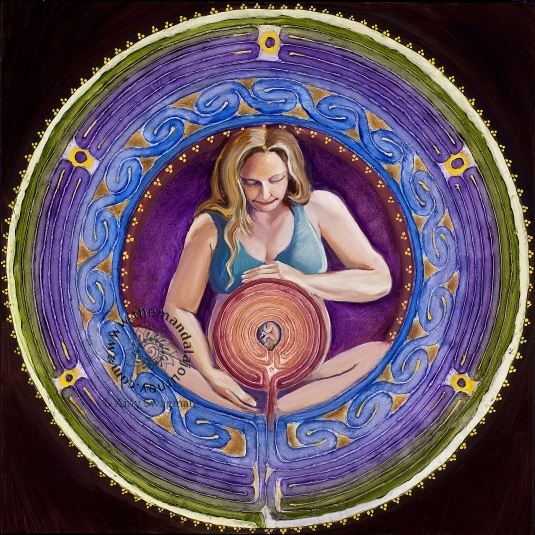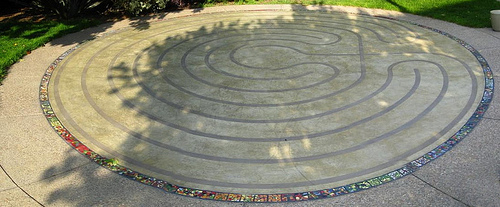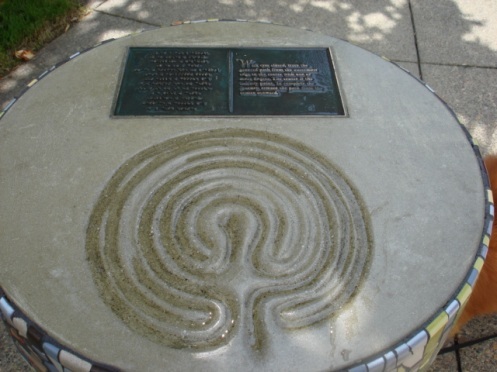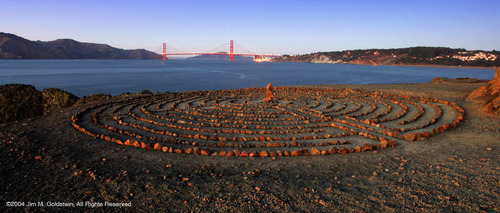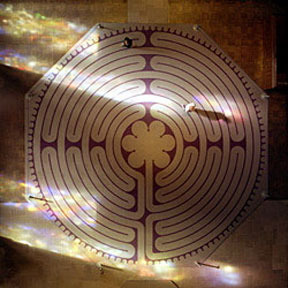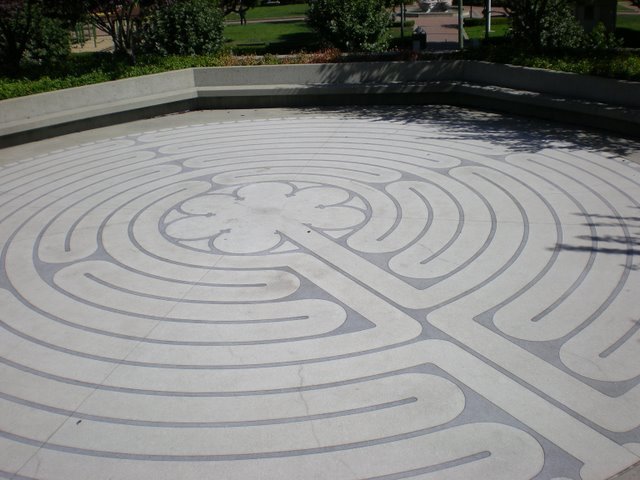Labyrinths of Birth
Amy Haderer (artist formerly known as Amy Swagman), Journeys Intertwined, Three Dimensional Piece: modeling medium, oil on gessoboard
Up the street from where I live is the Scott Street Labyrinth, a little labyrinth set off from the street and enclosed by a small wall. A miniature labyrinth used for finger tracing is set up on a stand near to the main labyrinth. I walked the labyrinth several times during both of my pregnancies, meditating on my babies upon reaching the labyrinth’s center.
Scott Street Labyrinth, photo by Wolf94114, Flickr
Miniature labyrinth, Scott Street, photo by Mary at terrallectualism
Unlike a maze, which has multiple, sometimes dead-end paths, a labyrinth is unicursal with a single path leading towards a center. In many cultures, images of childbirth labyrinths represent a mother’s emotional and physical passage towards her child, and can be used ritualistically by the pregnant woman as she prepares to labor and birth her baby. Pam England’s helpful manual, Labyrinth of Birth: Creating a Map, Meditations and Rituals for your Childbearing Year, is a wonderful guide to the history of labyrinths and how they can be used for birth. England describes the journey that one takes when walking a labyrinth,
The labyrinth is an ancient, universal symbol representing our journey through life, ordeals and transitions. Its single, convoluted pathway begins at the opening, leads directly to the center and out again. The journey into the labyrinth’s center is symbolic of letting go and of death (psychic or physical), and the journey from the center out of the labyrinth represents birth and rebirth. Walking or finger-tracing a labyrinth invokes a sensation of turning inward then outward, perhaps reminding us of our first journey from our mother’s body into the world (Introduction, iv).
Women can utilize images of labyrinths during their pregnancies to visualize a path to the child within them. During labor, visualization of the labyrinth can also aid the pregnant women as she realizes that her labor is a steady path she must take towards the birth of her child.
In Amy Haderer’s radiant mandala work above, Journeys Intertwined, a mother meditates on her full belly, within which rests the symbolic path of a labyrinthleading to her unborn child. Haderer, whose work is often found in the form of the mandala, has described the mandala as “perfect because it is in the shape of pregnancy itself.” Marked by its circular shape, a “mandala” is a sacred art form used in religious traditions such as Hinduism and Buddhism. Circles act as important symbols in many religious traditions around the world, and the word “mandala” is Sanskrit for “circle.”
Amy Haderer is a mother, doula and active member of the birth community in Denver, Colorado. Pregnant women can use her mandalas as powerful tools in helping them to visualize the births of their own children.
Below are some more images of labyrinths from my beloved San Francisco.
Lands End Labyrinth, San Francisco, @2004 Jim M. Goldstein, All Rights Reserved
Chartres Labyrinth at Grace Cathedral, San Francisco
Outdoor labyrinth at Grace Cathedral, San Francisco
